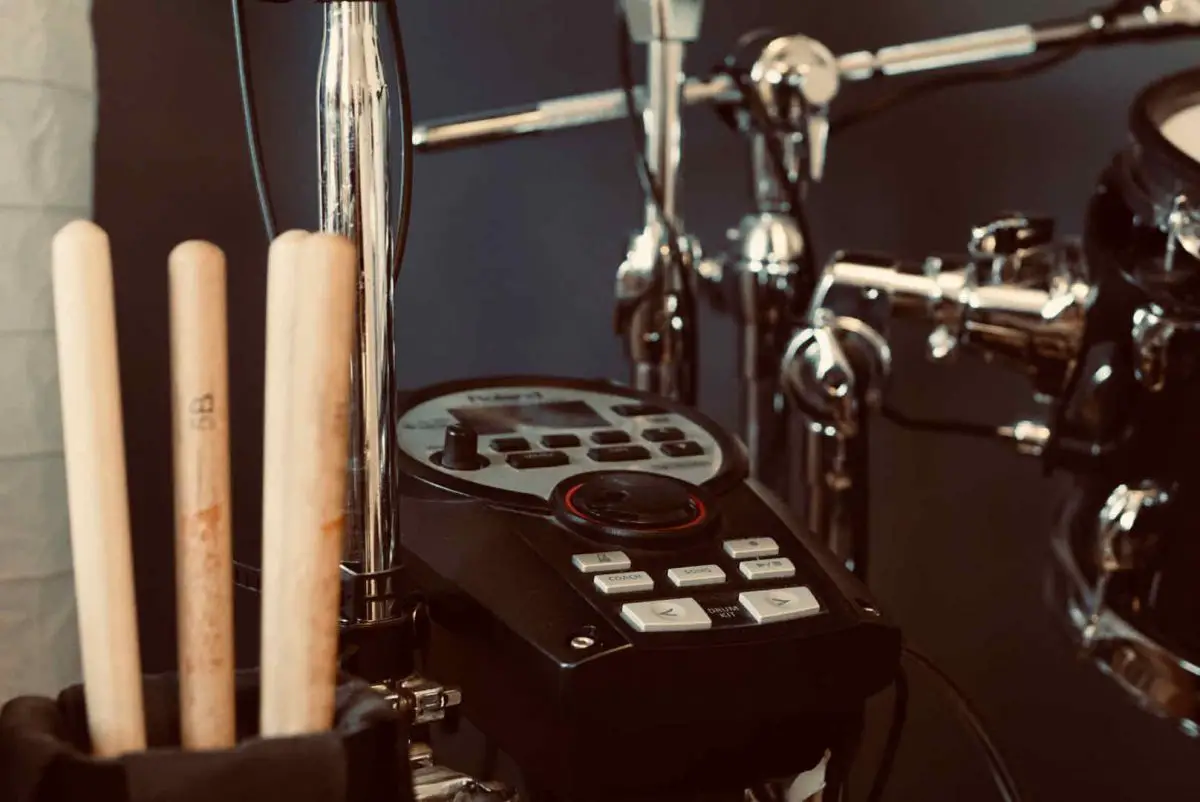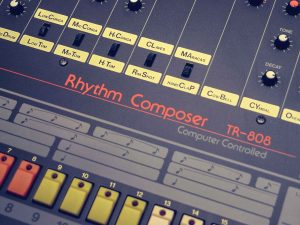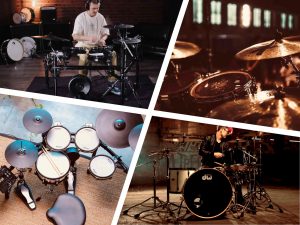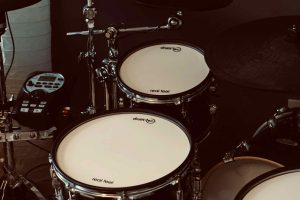What’s the best drum module for VST? If like me, all you want an eDrum kit to do is to trigger sounds via a VST drum library, it can be difficult to decide, as the average module has many features you wouldn’t need. Personally, I’ve used two different electronic drums to trigger VSTs like EZdrummer and Superior Drummer going back to 2009. Below are the top tips I’ve learned over the years for choosing a drum module specifically for use with a VST drum library.
Summary: Our top drum modules for VST Instruments
- Used options: Roland TD-11, TD-15, TD-25
- Budget options: eDRUMin 10, Roland TD-17, Yamaha DTX Pro
- Intermediate option: Roland TD-27
- Money-no-object option: Roland TD-50
Read the rest of this article for the rationale behind these modules!
What features should you look for?
Pad compatibility
The first thing to consider when choosing a drum module specifically for triggering a VST is what drum pads you have. If you don’t already have a set of drum pads, then your choice is easier, as you can choose a kit that comes with one of the modules suggested above (excluding the eDRUMin), fitting into your target price point.
If you already have a set of electronic drum pads, for example, if you’re upgrading an old kit or have built a DIY A-to-E drum conversion, then you need to make sure the pads you have are compatible.
Historically, compatibility between Roland and Yamaha pads and modules has not been assured. That’s because Yamaha has only recently adopted mesh heads on some of their kits, while Roland has been using them for many years. When it comes to cymbals, Yamaha and Roland pads are wired up differently, so using a Yamaha pad with a Roland kit can lead to unexpected results, or may not work at all.
It is very difficult to go through every permutation of pad and module here, so the simple answer is to try and stick to one brand where possible, or use third-party pads only if you’ve confirmed they are compatible.
USB interface
A USB interface built into the drum module is essential for connecting to a VST in the simplest ways. Fortunately, very few drum modules these days ship without one, you’ll often find a USB interface on anything other than the most basic of electronic drum kits.
On older kits without USB, connecting to a computer running a VST instrument would require a MIDI interface or audio interface with MIDI built-in. That would add extra cost and complexity to your set-up, which isn’t necessary with a built-in USB interface.
These days, it’s as simple as installing the module’s drivers on your PC or Mac and plugging it in with one cable. The module will act as the computer’s sound card, and if you’re on a PC, will use ASIO drivers, ensuring low latency that is essential for playing eDrums with a VST.
I previously used a Roland UM-One to connect my old eDrum kit to my Macbook – which is a quality MIDI interface with low latency.
One of the best things about using a module that has USB is the audio from your VST instrument can be piped back into your module. This allows you to output the audio via the headphone out and/or master out on the module itself. This means you don’t have to run a long headphone cable all the way from your computer and maintain a simple set-up.
Learn more about connecting your eDrums to a computer here.
Accurate triggering
The final essential thing to look for is the basics that a module should provide – accurate triggering. You’ll want your VST drum library to pick up your inputs on the drum pads 1:1, to have the most accurate representation of your performance being played back via the VST sounds.
The good news is most modules offer this basic functionality, but it tends to be best to stick with reputable brands such as Roland or Yamaha, rather than unknown budget brands. You really do get what you pay for. Roland modules for example are well renowned for having excellent triggering response and having owned two Roland drum kits going back to 2008, I can vouch for this.
Some higher-end Roland modules such as the TD-27 and TD-50 also support digital pads, which add even more accuracy to their trigger response. If you have the budget and the required digital pads, then it’s worth considering these modules. Our tip would be to opt for the TD-27 unless you absolutely need the extra pad inputs offered on the TD-50.
Another Roland technology is positional sensing, which works on analog drum pads that have a centre-mounted trigger. This is used to provide a slightly different sound to the drum when you hit the edge compared to the centre, just like on a real acoustic drum.
However, positional sensing is famous on drum forums for causing hot-spotting, which is when you get a very loud 100% volume sound trigger from a gentle tap on the centre-mounted trigger cone, which can be overly sensitive.
Our tip is to avoid using positional sensing as a result and use pads that have side-mounted triggers, which are typically found on cheaper eDrum kits, as well as on premium options like ATV and EFnote, where drum pads use multiple trigger cones around the edge of the drum pad.
Positional sensing sounds great on paper, but in practice, the hot-spotting issues may cause issues with inaccurate triggering, and can be especially frustrating if you’re looking to use your eDrums with VST to record music or play live.
What features don’t you need?
Great built-in sounds
As you’ll be using your electronic drums with a VST, you’ll be bypassing the onboard sounds completely, so there’s no need to consider this as a factor for your purchase. You might even consider a module that has no built-in sound engine at all, which is often called a trigger interface. An example of this is the eDRUMin, which is a small USB device that connects drum triggers to a computer via USB.
The device is controlled by software on your computer and can be connected to your VST, as well as supporting drum pads from both Roland and Yamaha.
This is an affordable option, but unfortunately at the time of writing, the full-sized eDRUMin 10 (with 10 pad inputs) is out of stock with more units expected by August 2023.
Aside from the eDRUMin, our recommendation is to look for the cheapest drum module from a reputable brand that has enough trigger inputs for your needs. We’ve picked the Roland TD-17 (read our TD-17 review here) and the Yamaha DTX Pro, which are similar in price and have enough trigger inputs for the vast majority of drummers who use a standard-sized kit.
Alternatively to save even more money, consider a used module, since you can pick one up with multiple inputs for much less than a new kit, and won’t have to worry about the dated built-in drum sounds.
Should you buy used?
Buying used means you can pick up a module with all the inputs you need at a much lower price. However, there are a few things to consider.
Firstly is to consider a kit with USB over one without, for the simplified set-up detailed above. The caveat is if you were to find an older module that was much cheaper, to offset the cost of purchasing an audio interface.
Secondly, think about how old the module actually is. Roland and Yamaha modules are dependable and can last for many years, but not all will. There are reports for example of the screens failing on older Roland modules. A simple solution is to only look back one or two generations, for example back to the TD-30, 11 and 15 generation, which will be up to around 10 years old now. These modules also include USB. If you go older, then your budget might stretch to a TD-20, which could be a good option if you need a lot of pad inputs. But beware of the age, which might cause unreliability and lack of USB.
Saving money on your drum module for VST use
As we’ve seen, there are several things to consider when choosing a drum module for VST use. One final thought is to only buy what you need, aside from trigger inputs, as you might want to expand your kit in the future. Provided you have the basics – great trigger response and a USB connection, the number of trigger inputs is the only other value-add for a module that will permanently be connected to a computer and triggering a VST.
This article contains affiliate links. If you purchase a product through certain links on our site, we may earn a small affiliate commission. Learn more about our adverts and why you can trust eDrumHub here.




